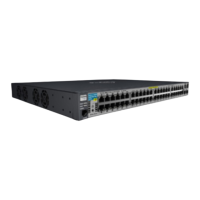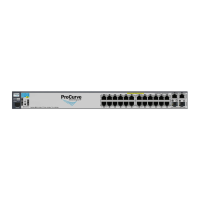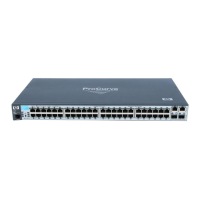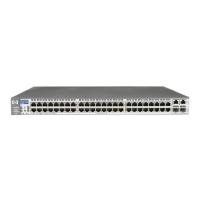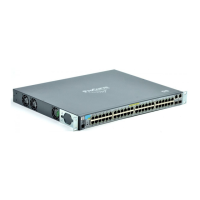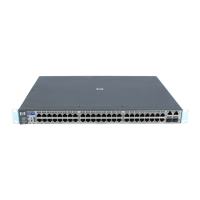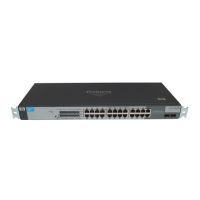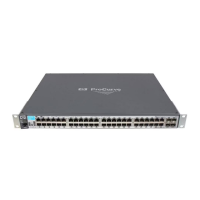Quality of Service (QoS): Managing Bandwidth More Effectively
IP Multicast (IGMP) Interaction with QoS
IP Multicast (IGMP) Interaction with
QoS
IGMP high-priority-forward causes the switch to service the subscribed IP
multicast group traffic at high priority, even if QoS on the switch has relegated
the traffic to a lower priority. This does not affect any QoS priority settings,
so the QoS priority is honored by downstream devices. However, QoS does
take precedence over IGMP normal-priority traffic.
The switch’s ability to prioritize IGMP traffic for either a normal or high
priority outbound queue overrides any QoS criteria, and does not affect any
802.1p priority settings the switch may assign. For a given packet, if both IGMP
high priority and QoS are configured, the QoS classification occurs and the
switch marks the packet for downstream devices, but the packet is serviced
by the high-priority queue when leaving the switch.
IGMP High
Priority
QoS Configuration
Affects Packet
Switch Port Output
Queue
Outbound 802.1p Setting
(Requires Tagged VLAN)
Not Enabled Yes Determined by QoS Determined by QoS
Enabled See above para- High As determined by QoS if QoS is
graph. active.
QoS Messages in the CLI
Message Meaning
DSCP Policy < decimal-codepoint > not
configured
Cannot modify DSCP Policy < codepoint > - in
use by other qos rules.
You have attempted to map a QoS classifier to
a codepoint for which there is no configured
priority (No-override). Use the qos dscp-map
command to configure a priority for the
codepoint, then map the classifier to the
codepoint.
You have attempted to map a QoS classifier to
a codepoint that is already in use by other QoS
classifiers. Before remapping the codepoint
to a new priority, you must reconfigure the
other QoS classifiers so that they do not use
this codepoint. You can have multiple QoS
classifiers use this same codepoint as long as
it is acceptable for all such classifiers to use
the same priority.
6-65
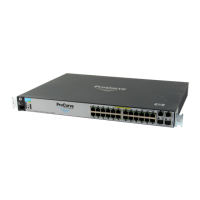
